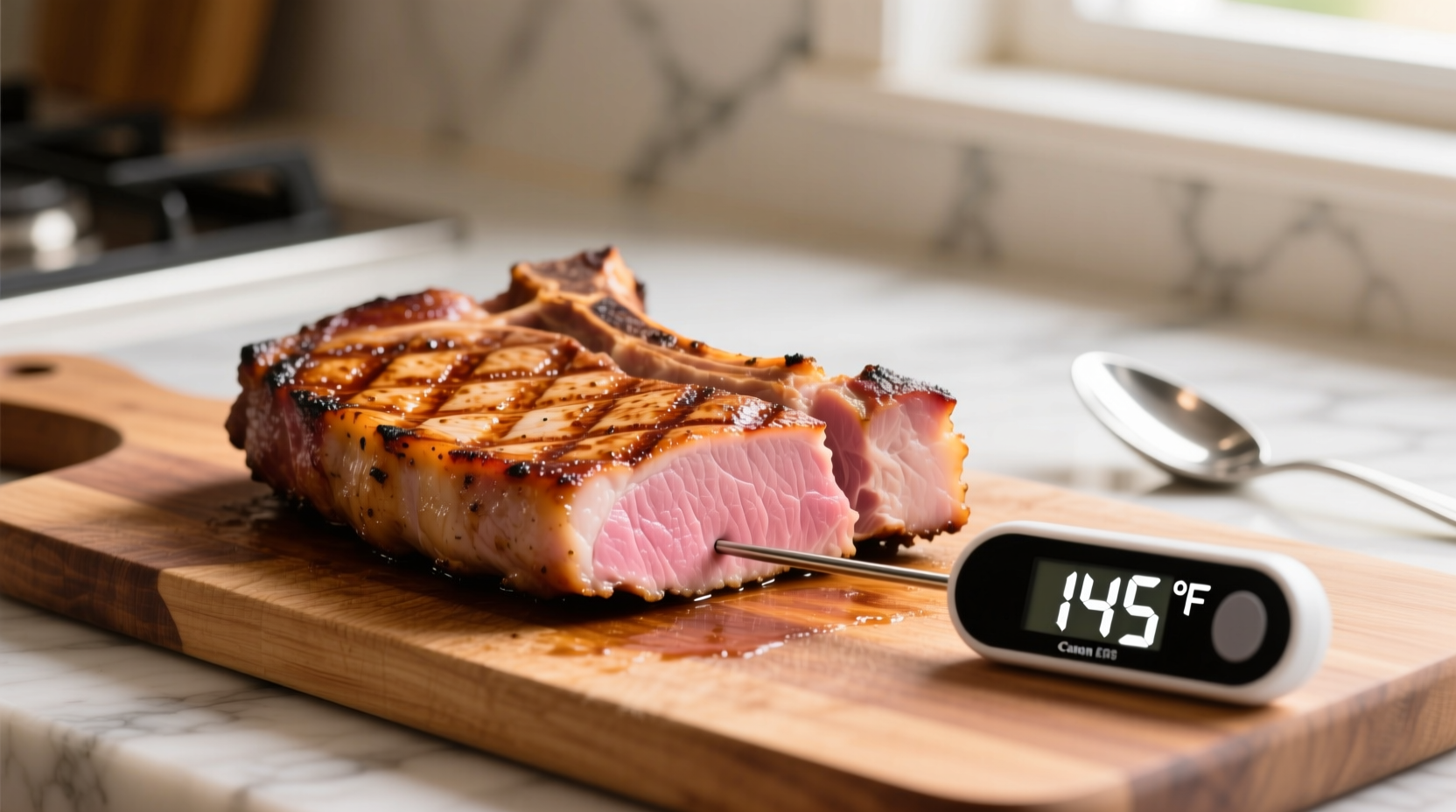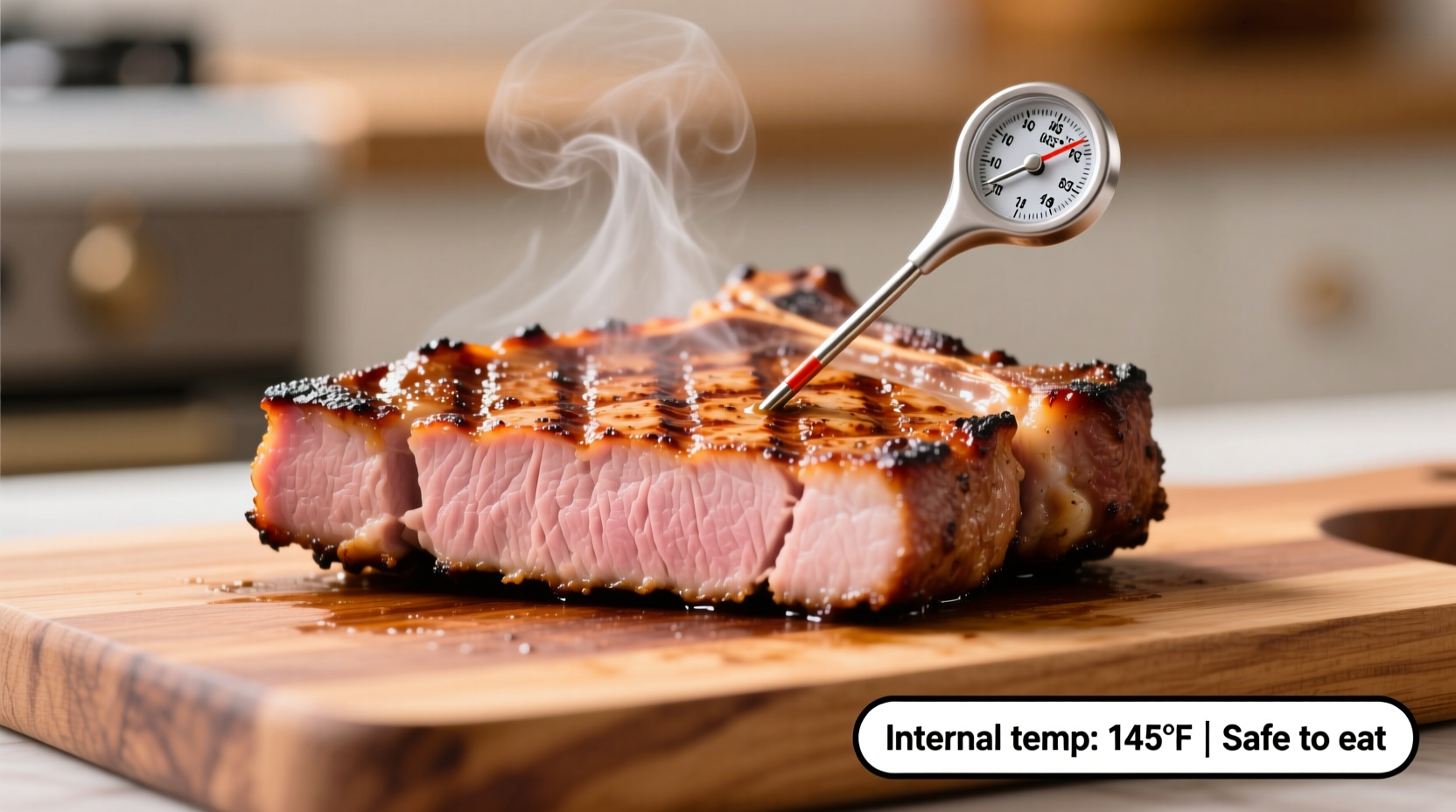Why Proper Pork Cooking Temperature Matters More Than You Think
For decades, home cooks feared undercooked pork, leading to dry, overcooked results. Modern pork production has virtually eliminated trichinosis risks, yet many still cook pork chops to well-done temperatures out of habit. Understanding the science behind pork doneness transforms your cooking:
- Food safety: The USDA lowered the recommended temperature from 160°F to 145°F in 2011 after extensive research confirmed pathogen elimination at this lower temperature
- Texture preservation: Every 5°F above 145°F causes approximately 10% more moisture loss in pork
- Flavor development: Maillard reaction (browning) creates complex flavors best achieved between 130-150°F

The Thermometer Method: Your Most Reliable Tool
Professional chefs universally agree: a quality instant-read thermometer eliminates guesswork. Here's how to use it correctly:
- Insert the probe into the thickest part of the chop, avoiding bone or fat
- Wait 10-15 seconds for an accurate reading (digital thermometers provide fastest results)
- Remove from heat at 140°F—the temperature will rise 5°F during resting
- Let rest 3 minutes before serving (critical for juice redistribution)
| Temperature | Doneness Level | Visual Characteristics | Safety Status |
|---|---|---|---|
| 120-125°F | Rare | Bright red center, very soft | Not recommended for pork |
| 130-135°F | Medium-rare | Pink center, slightly springy | Safe but not USDA standard |
| 140-145°F | Medium | Light pink center, firm but yielding | USDA recommended safe temperature |
| 150-155°F | Medium-well | Minimal pink, firm texture | Safe but beginning to dry out |
| 160°F+ | Well-done | No pink, very firm, dry | Safe but significantly overcooked |
Alternative Methods When You Don't Have a Thermometer
While less precise, these techniques work in a pinch. Combine multiple methods for best results:
The Touch Test: Developing Your Muscle Memory
Compare the firmness of your pork chop to the fleshy part of your hand below the thumb:
- Rare: Like relaxed hand (not recommended for pork)
- Medium-rare: Like touching thumb to index finger
- Medium: Like touching thumb to middle finger (target for pork)
- Well-done: Like touching thumb to pinky finger
Juice Color Observation
When pierced with a fork or knife tip:
- Clear or faintly pink juices indicate proper doneness
- Bright red juices mean undercooked
- Completely clear juices often indicate overcooking
Important context boundary: These alternative methods work best with boneless, uniform-thickness chops. Bone-in chops, varying thicknesses, or irregular shapes significantly reduce accuracy. Always verify with a thermometer when possible, especially for thicker cuts over 1.5 inches.
Avoiding Common Pork Cooking Mistakes
Even experienced cooks make these errors that compromise results:
- Testing doneness too early: Checking before 75% of estimated cooking time causes unnecessary heat loss and moisture escape
- Cutting to check: Creates channels for juice loss—use the thermometer method instead
- Skipping the rest period: Without resting, up to 40% of juices escape when cutting
- Ignoring carryover cooking: Temperature continues rising 5-10°F after removal from heat
Special Considerations for Different Cooking Methods
How you cook affects doneness indicators:
- Pan-searing: Look for golden-brown crust and slight resistance when pressed (medium-firm)
- Grilling: Watch for slight shrinkage from the bone and easy release from grates
- Oven-roasting: Use thermometer as visual cues are less reliable with indirect heat
- Sous vide: Precise temperature control eliminates guesswork (cook at 140°F for 1-4 hours)
According to research from the USDA Food Safety and Inspection Service, 87% of home cooks overestimate pork doneness, leading to unnecessarily dry results. Modern pork's leaner composition means it cooks faster than older varieties—adjust your timing accordingly.
Troubleshooting Your Pork Chop Results
What to do when things don't go as planned:
- Undercooked (below 140°F): Return to heat source and continue cooking in 30-second intervals, checking temperature each time
- Slightly overcooked (150-155°F): Slice thinly against the grain and serve with sauce to compensate for dryness
- Very overcooked (160°F+): Shred for tacos or sandwiches where moisture can be added back
- Inconsistent doneness: For thicker chops, try reverse searing—slow roast first, then sear











 浙公网安备
33010002000092号
浙公网安备
33010002000092号 浙B2-20120091-4
浙B2-20120091-4